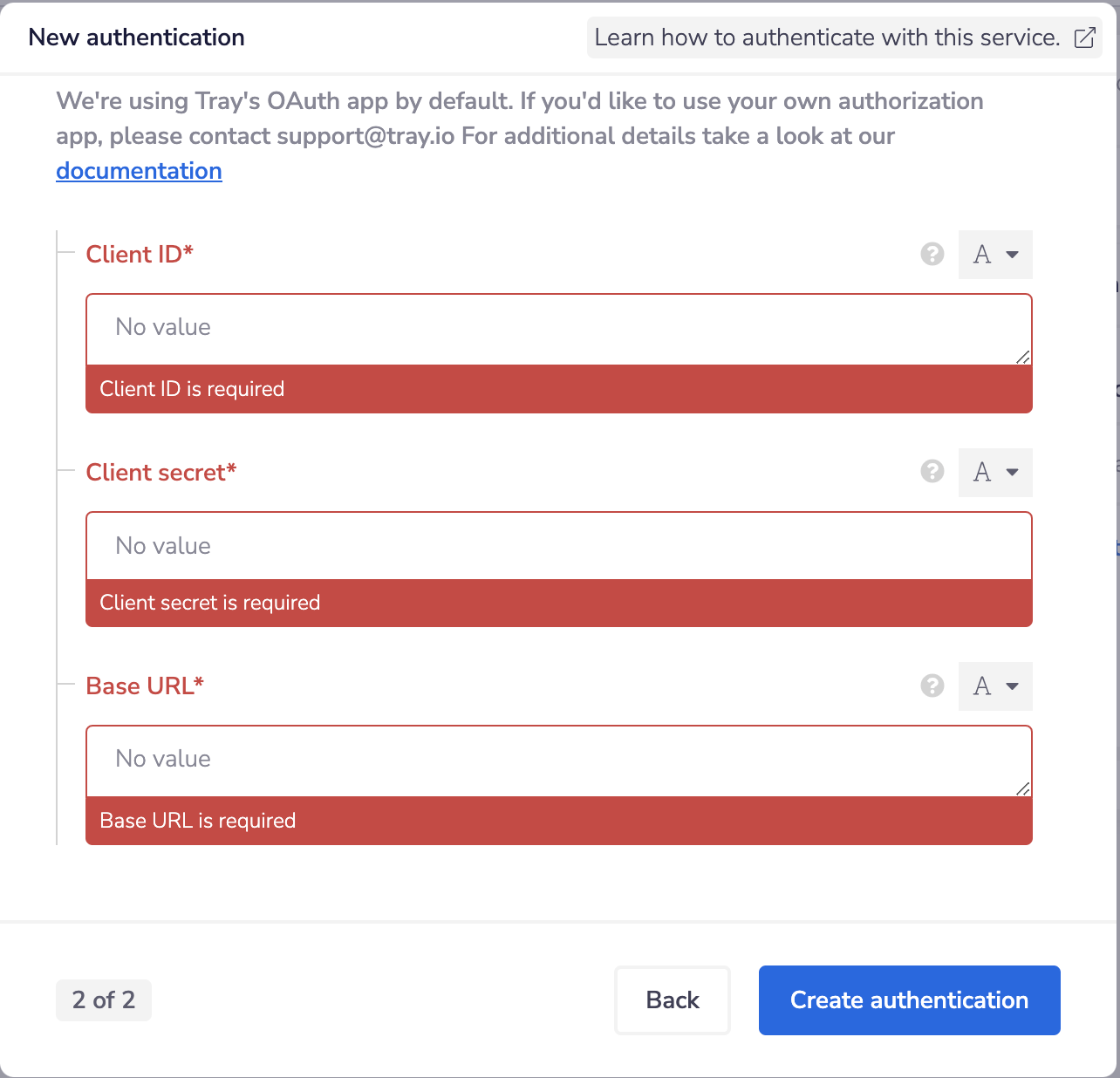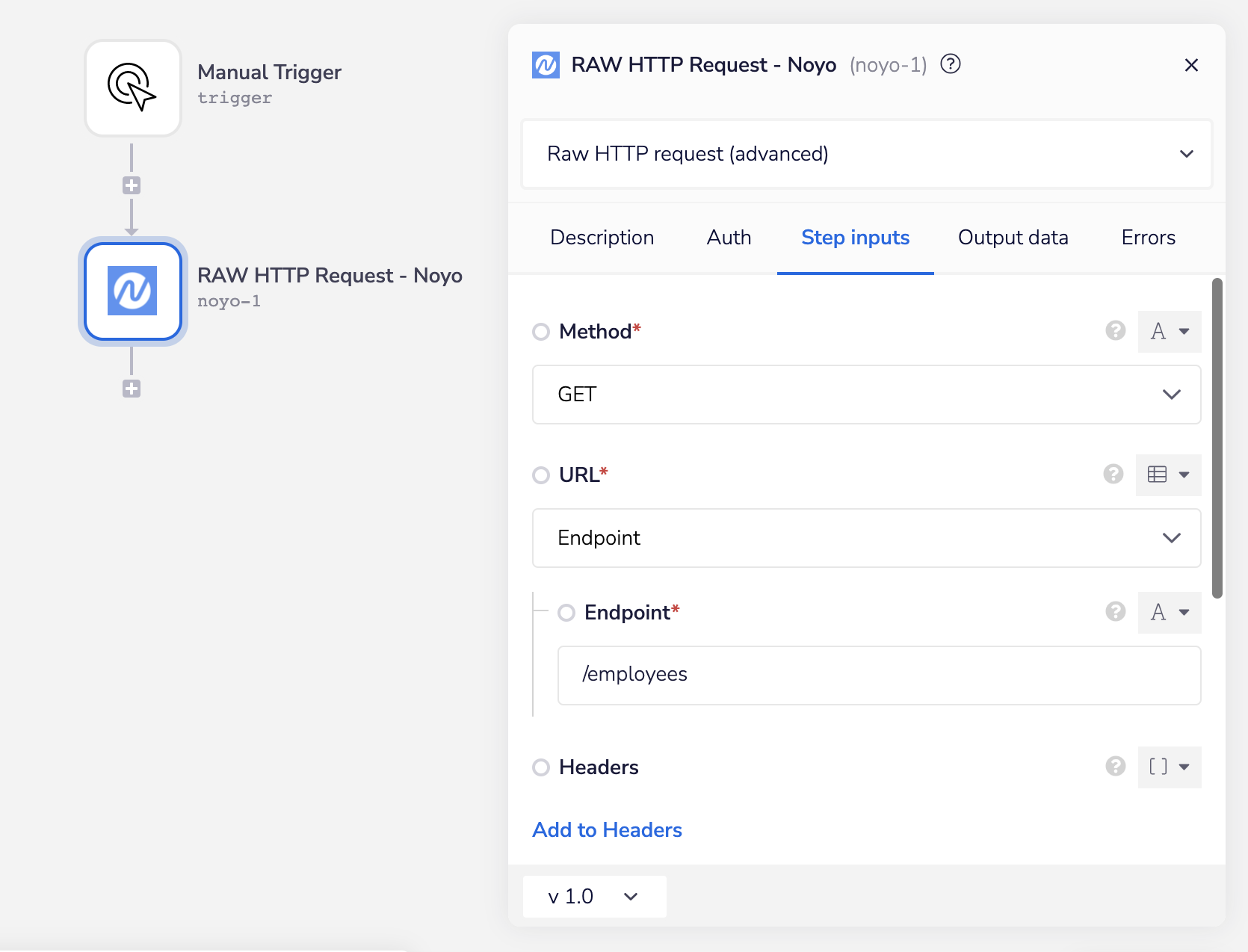Noyo
Overview
Noyo is provide API-powered data infrastructure to help connect the employee benefits ecosystem.
**API Information **
The Base URL used for the Noyo connector is the URL you provide at the point of authentication and is dependent on which Noyo API you'd like to authenticate to and which environment (production or sandbox). More information can be found on their main API documentation (v1.0) site. For example, to connect to the Noyo Fulfillment API, the Base URL for the production environment would be **https://fulfullment.noyo.com/api/v1 **and for the sandbox environment it would be https://fulfullment-sandbox.noyo.com/api/v1.
Authentication
Within the builder, click on the Noyo connector to display the connector properties panel. Select the 'Authentication' tab and click on the 'New authentication' button.
In the Tray.io authentication pop-up modal, name the authentication in a way that will quickly identify it within a potentially large list. For example, whether it is a Sandbox or Production auth, etc.
Consider who/ how many people will need access to this authentication when choosing where to create this authentication ('Personal' or 'Organisational').
The second page asks you for your 'Client ID', 'Client Secret' and 'Base URL' credentials.
 To get these fields, contact Noyo support.
Once you have added these fields to your Tray.io authentication pop-up window, click the 'Create authentication' button.
Your connector authentication setup should now be complete.
To get these fields, contact Noyo support.
Once you have added these fields to your Tray.io authentication pop-up window, click the 'Create authentication' button.
Your connector authentication setup should now be complete.
Available Operations
The examples below show one or two of the available connector operations in use. Please see the Full Operations Reference at the end of this page for details on all available operations for this connector.
Using the Raw HTTP Request ('Universal Operation')
As of version 1.0, you can effectively create your own operations.
This is a powerful feature that you can use when there is an endpoint in Noyo that is not used by any of our operations.
To use this, you will first of all need to research the endpoint in the Noyo API Documentation v1.0 to find the exact format that Noyo will be expecting the endpoint to be passed in.
For example, say you wanted to List employees, you would use the Noyo API docs to find the relevant endpoint - ***which in this case is a ***GET*** request called: ***/employees***. ***
The Base URL for this call in a sandbox environment would be https://fulfillment-sandbox.noyo.com/api/v1.
More details about this endpoint can be found here.
Based on the information provided in the above API call doc, you need to configure the following attributes on your Tray platform:
- Method:
GET - **URL: **
- **Endpoint: **
**/employees**
- **Endpoint: **
- **Query parameters (optional): **
**first_name, last_name, date_of_birth, page_size, offset** Once the API call is executed successfully, you should get the following results:
Once the API call is executed successfully, you should get the following results: